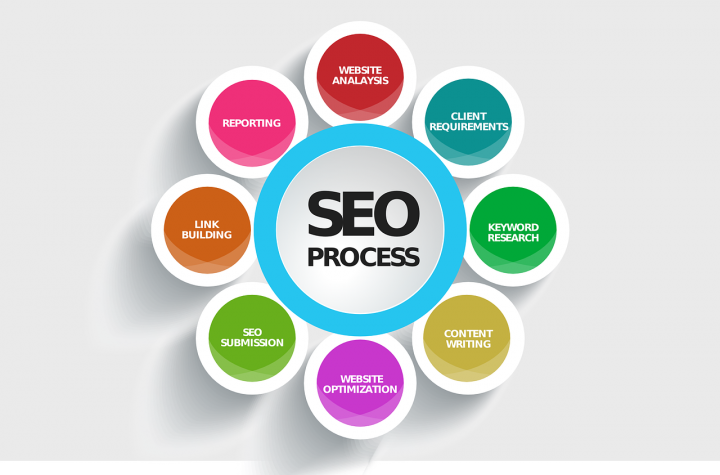
Optimizing your website for mobile devices can be done using the same SEO strategies as for desktop computers. SEO is as simple as adding the most relevant keywords and titles to your meta description. To encourage click-throughs, you should also include a call-to-action in your meta description. Your website should contain relevant keywords and emojis in order to grab your users' attention.
User-friendly content
Optimizing your website for mobile users requires a few additional steps. The first step is to make sure your website mobile-friendly. Avoid crawl errors and concentrate on the user-experience. Adobe Flash is not supported by many mobile devices so make sure you remove it from your website. You should ensure that your site is easy to navigate and clear. You should make your text large enough to be read, and use legible fonts. Mobile users' search intent may be different from desktop users', so it is important to optimize your content for mobile users.
Page speed
Mobile devices offer a completely different experience than desktops. A slow website will cause users to leave. It is vital to optimize your site for mobile speed. Google PageSpeed Insights can help you check the speed of your site across different devices. Mobile-friendly websites are easier to load and more likely to convert.

Canonical tags
Canonical tags can make duplicate content worse. This is one of the biggest mistakes. The redirect URL is the actual target and should not contain duplicate or similar content. Some SEOs incorrectly pass link signals through canonical tag, which is not the best method. Find out how canonical Tags are used in mobile SEO strategies.
Relevant keywords
Local keywords are an essential part of any SEO strategy if you have a mobile site. Local keywords can improve your website's ranking in local search engines. They are easily found via keyword research tools like Keyword Intelligence. You can find untapped keyword opportunities in your local area by simply choosing your language and location. The tool will provide you with a list relevant keywords. Keep in mind that local search volume varies from location to location, so be sure to target relevant keywords for your location.
Google SERPs Featured Snippets
Featured snippets (also known as search engine result pages or SERPs) are the content that appears at top of search engine results page (SERPs). They provide the best possible answers for users' questions. These snippets typically contain relevant content from high-ranking web pages. This makes them perfect for reducing clicks. A featured snippet is a great way to jumpstart your website's SEO efforts.

FAQ
Why Should I Use Social Media Marketing
Social media marketing is an excellent way to reach new customers or build relationships with your existing customers. It's easy to build a community around your company by posting interesting articles, engaging with others through comments or likes, and creating a buzz about it. This makes it easier and more convenient for potential customers to find your brand online.
What are some of the best tools to do on-page search engine optimization?
Video embeds and image alt tags are great tools for on-page optimization. You can read more about these types issues in this article.
What is a blog post?
A blog is a type of website used to share articles with visitors. Blogs contain a mix between written posts and pictures.
Bloggers write blogs about their own experiences, interests, and opinions, but some bloggers choose to write about topics related to their business or career instead.
Blog owners can start blogs using a very simple program called a blogging platform'. There are many blogging platforms. However, WordPress, Tumblr, and Blogger are the three most popular ones.
Blogs are read by people who like the content. Therefore, it's vital to keep your writing engaging. Write about a specific topic if you want to write.
You should also provide helpful information and resources to help readers understand the subject better. If you are writing about improving your website's functionality, don't tell people to just go to Google to see the websites of other businesses. Instead, you should give steps for creating a successful website.
It's worth noting, too, that how well your blog is written will determine whether or not people enjoy it. Your writing will be viewed as uninteresting if it's not clear and concise. The same goes for poor spelling and grammar.
It's easy to get carried away when you start blogging. You should stick to a publishing schedule, and publish content only once per week. You should not feel like your blog is a chore.
Statistics
- These guides are designed and coded 100% from scratch using WordPress. (backlinko.com)
- 64% of marketers actively create SEO campaigns because they help hit multiple key performance indicators (KPIs), including increasing traffic, helping your site rank for relevant keywords, improving your conversion rate, and much more. (semrush.com)
- Deleting those 10k pages is one of the main reasons that he improved his site's organic traffic by nearly 90%: (backlinko.com)
- A 62.60% organic traffic boost to that page: (backlinko.com)
- If two people in 10 clicks go to your site as a result, that is a 20% CTR. (semrush.com)
External Links
How To
How do you set up your first blog?
It's simple! WordPress is an excellent platform for creating a blog. The user can modify the look and feel of their blog easily by adding themes and changing fonts and colors. They can also create plugins that will automatically alter certain aspects of the website according to visitor activity.
There are many free templates you can download from WordPress.org. You also have the option to purchase premium templates. Premium templates include extra pages, plugins, advanced security, and more.
Once you've downloaded your template, you'll need to sign up for a free account with a hosting provider to upload your files and run your blog. While many hosting providers offer free accounts, there are often limitations on how much space you have, how many domains can you host, and how many email addresses you can send.
If you decide to use more than one domain name, you'll also need to buy separate email addresses. Some hosts charge a monthly subscription fee.
If you're new to blogging, you may wonder why anyone would pay to have a blog hosted online. Hosts offer unlimited storage space. This means that files can be saved indefinitely and won't be lost if they're accidentally deleted.
Hosting providers often allow multiple domain hosting, so you can have many sites from the same package. You don't need multiple email addresses and can manage all your sites through the one interface.
Some hosts offer social media sharing buttons that allow visitors to quickly share their posts on the web.
Most hosting companies offer tools for managing your blog. You can check the performance stats for your site, view how many visitors each article has received, and even compare your traffic to other blogs.
These tools can make it easier to manage your blog faster and easier, so make sure you check them out before you buy a web hosting plan.
To sum up:
-
Select a topic that is relevant to your business.
-
Create engaging content;
-
Optimize your site using SEO techniques;
-
Promote your site using social media channels;
-
Monitor your statistics regularly to make changes where necessary;
-
Don't forget to update the blog often.
In other words, create quality content, promote it effectively, track its success.